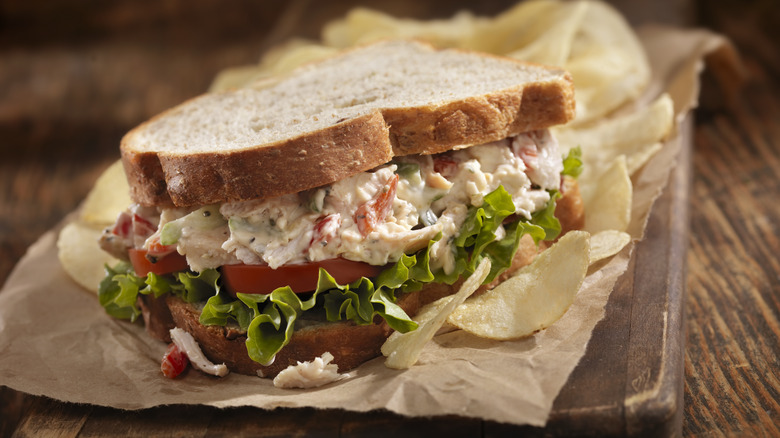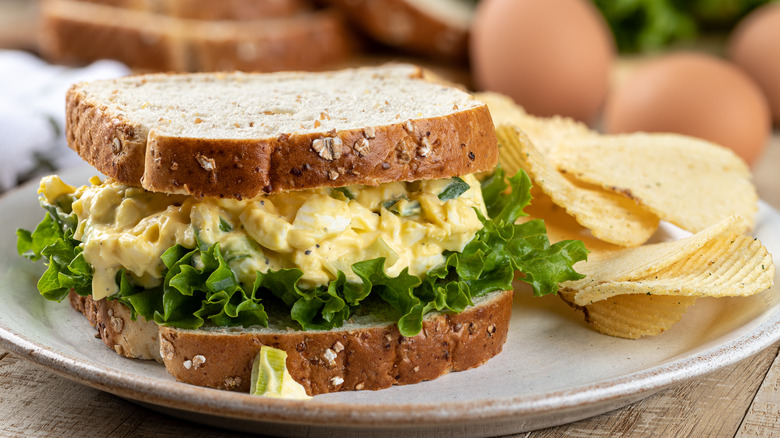The Pro Tip For Preventing Your Chicken And Other Salad Sandwiches From Getting Soggy
Biting into a wet, soggy sandwich is hugely disappointing — and some classic salad choices are especially prone to this dreaded fate. So how can you prevent it from happening? To get the lowdown on superior sandwich-making, Food Republic asked an expert for some pro tips.
John Politte, who is the owner and executive chef for "It's Only Food," is full of helpful advice to stop the sogginess. This starts with using the right sort of bread. Politte favors "sturdy bread like rye or whole grain," which can withstand the creamy onslaught of even the most luxuriously soft egg salad. Another of the chef's tips is to toast the bread, which dries it out so it won't absorb so much moisture. Try toasting just the inside rather than both sides to keep the exterior softer.
Think about the ratio of ingredients for the filling, too. "Make sure the recipe you have for the salad mixture is correct, so you are not putting too much mayo in the recipe to make the bread soggy," says Politte. Consider an extra-flavorful mayo, so you don't need to use as much; it's why the best mayo to use for egg, tuna, and chicken salad sandwiches is an umami-rich option such as Kewpie. But to really take sandwiches to the next level, it's worth getting technical when it comes to composition, too.
Consider the order of ingredients to prevent soggy sandwiches
The art of sandwich-making involves more than just randomly piling fillings between two slices of bread. A great way to ensure the hand-held dish retains its structural integrity is to pay attention to the order in which you layer the ingredients. "Put the composed salad mixture (be it tuna, chicken, egg, or ham salad) on a dry piece of washed lettuce when making the sandwich," suggests chef John Politte. The dry lettuce acts like a protective barrier to stop the moist filling making the bread soggy.
Consider the positioning of watery fruits or vegetables when assembling your favorite sandwich, too. "If you want to use tomatoes, be sure they are inside the sandwich components," recommends Politte. It's also recommended to place them in the top portion of the sandwich so they don't soak the bottom half — and pat them dry first to reduce dampness. The same advice applies to wet ingredients such as sliced cucumber, or pickles.
Even if you construct your sandwich with due diligence, the texture may still deteriorate if you're not eating it right away, and especially if you're transporting the food to another location. Politte has a top tip for this, too. "If you are packing lunch for later, wrap the ingredients separately, and make the sandwich before you eat it," he suggests. A simple yet effective solution to prevent a soggy mess.


